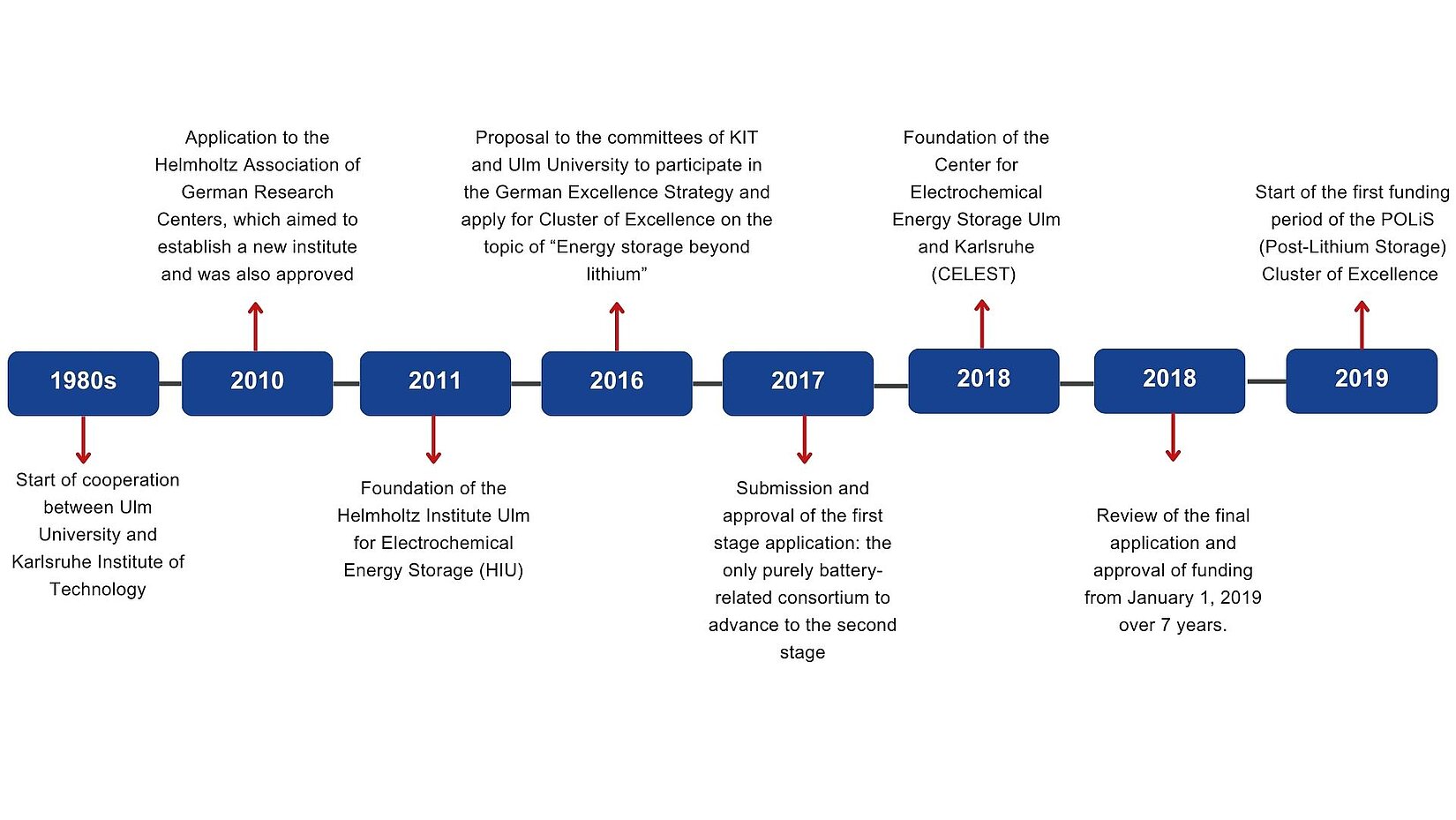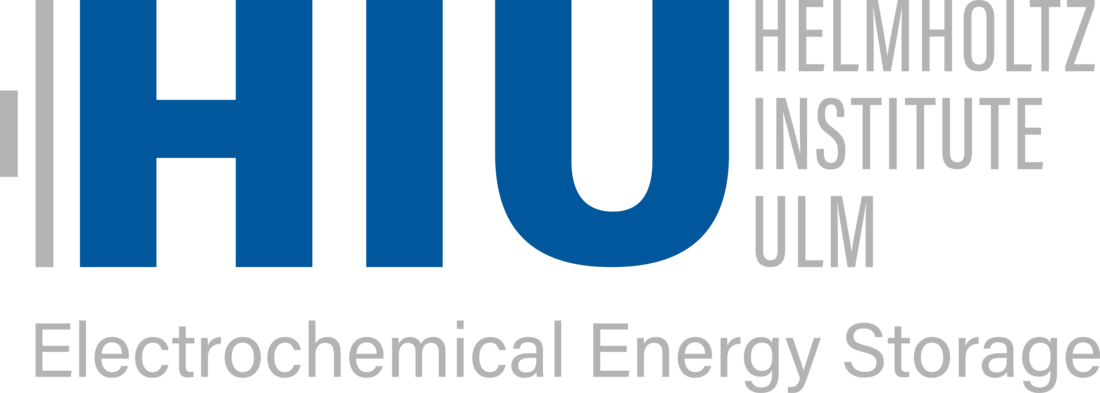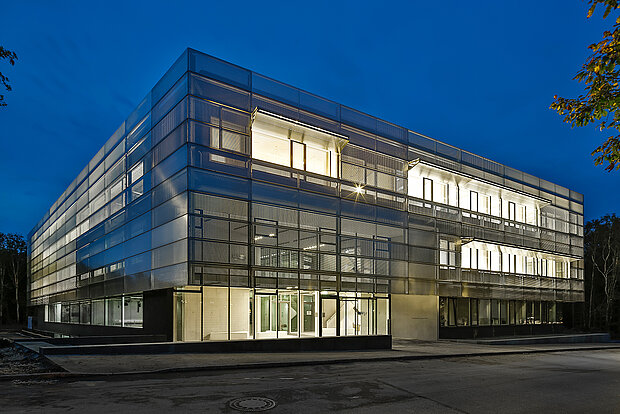History

History of POLiS

Synergies of Karlsruhe and Ulm Battery Research
The collaboration of Ulm University and Karlsruhe University dates back to the 1980s, where several research groups collaborated on various aspects of electrochemistry. More than 20 years later, Germany began aiming at playing a major international role in research and development of modern batteries, and electrochemistry – a topic that had been dormant for a while – gained tremendous attention again.
Motivated by these circumstances, a group of scientists from Ulm and Karlsruhe led by Horst Hahn from the Institute of Nanotechnology at KIT met at the scenic Reisensburg in spring 2010, to discuss the structure and content of a new and joint effort in the field of Electrochemical Energy Storage. In September 2010, a proposal was submitted to the German Helmholtz Association of Research Centers, with the aim to establish a new institute. The proposal was evaluated by an international review commission and granted in November 2010.
Already in January 2011, the Helmholtz-Institute Ulm for Electrochemical Energy Storage (HIU) was founded. The institute is carried by KIT as legal entity, with Ulm University as partner and ZSW Ulm and DLR as associate partners. In the following years, HIU took an active role in driving and strengthening the collaboration between the partners and attracted researchers from all over the world who wanted to work at the forefront of electrochemical energy storage.
Building on the successful work and collaboration within the HIU, a first suggestion for a joint proposal was sent to the boards of KIT and Ulm University in spring 2016, with the aim to participate in the new German Excellence Strategy and apply for a Cluster of Excellence on “Energy Storage Beyond Lithium”. The idea was selected and eventually became one of the first stage proposals submitted in February 2017. Besides KIT and UUlm, also ZSW Ulm and the Justus-Liebig University in Giessen were partners in the consortium. Our joint proposal on “Energy Storage Beyond Lithium” was approved by the reviewers of the German Science Foundation (DFG) in September 2017, and we became the only purely battery-related consortium to enter the second stage.
The following months were dedicated to build the main structure of the work, filling the aims and claims with life and then to submit the final version of approximately 200 pages in February 2018. Soon after, in April 2018, the consortium was invited to defend the proposal in front of 20 international referees selected by DFG. Our proposal and presentation were able to convince the reviewers, so that the activity was among those which were set on “green” in the final round. The final decision came in September 28th, 2018 and the Excellence Cluster Post-Lithium Storage (POLiS) was selected among 58 other proposals in Germany to receive funding for approximately 100 researchers over 7 years, starting from January 1st, 2019.
Since then, the Cluster of Excellence POLiS (Post-Lithium Storage) has been researching new battery materials and technology concepts for the efficient and sustainable storage of electrical energy. The aim is to develop electrode materials and electrolytes that enable sustainable systems based on sodium, magnesium, aluminum, calcium and chlorine ions. Of the four new battery types currently the subject of international research and based on the use of magnesium, sodium, chloride or fluoride as charge carriers, two (chloride-ion and fluoride-ion batteries) were presented for the first time by the Helmholtz Institute Ulm (HIU). HIU has developed the best electrolyte currently available for a magnesium battery, which has also enabled the construction of the first reversible magnesium-sulphur cells with extended cycles. With the exception of the sodium-ion battery, all of these systems have the potential to achieve significantly higher energy storage densities than today's lithium-ion batteries. The HIU has played a pioneering role in these new fields of research.
POLiS is also embedded in the Center for Electrochemical Energy Storage Ulm and Karlsruhe (CELEST), founded in 2018 by KIT, Ulm University and ZSW. CELEST conducts research in all areas of electrochemical energy storage and covers the entire research and development chain from basic research to technology transfer. With 31 institutes and 46 working groups of its three partners, CELEST represents one of the largest research platforms on this topic worldwide.



